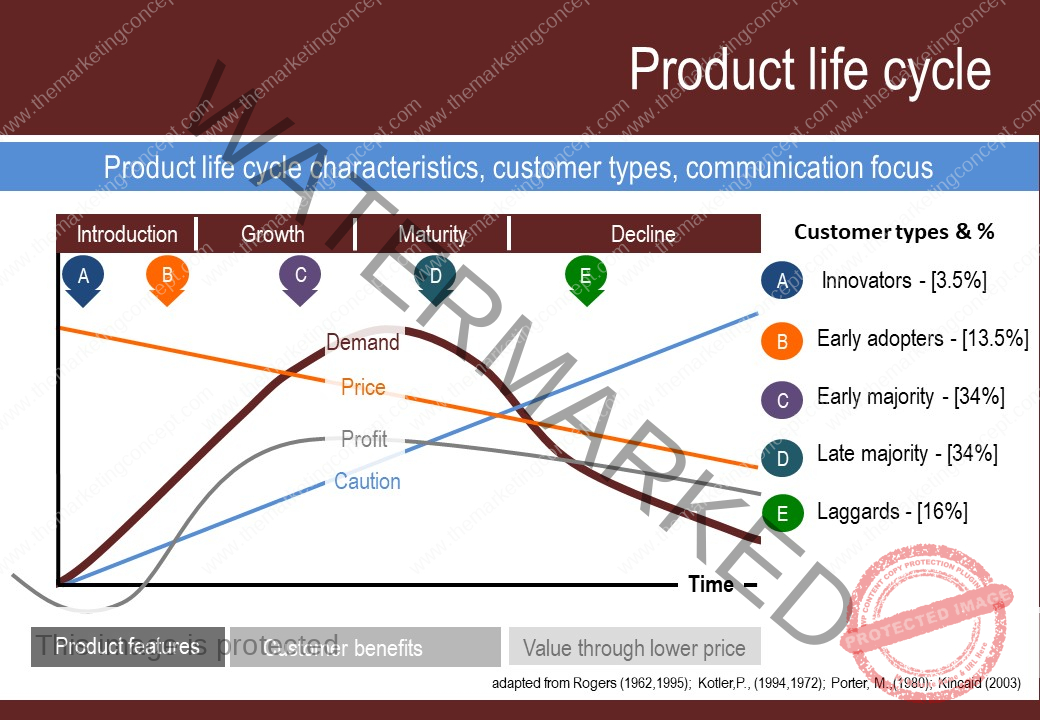
price & pricing & the product life cycle
Stephen Fanning
This activity is based on a fictional situation – however, advice from the automobile industry contributed to the activity
In a previous activity, [4 university friends catch up], we were introduced to Joseph, the state manager of a leading car manufacturer – a brand that has considerable brand loyalty. To maximize market share and appeal to the various market segments [a segments of the market strategy] the organisation offers models in 10 price brackets. One of Joseph’s task is to provide supporting services to the sales teams within the organisations that distribute his organisation’s products. There are five metropolitan dealerships and four regional dealerships.
All metropolitan dealers pay the same invoice price for each model and enjoy the same rebate structure. The rebate structure is comprised of short-term incentives, awarded for achieving and exceeding quarterly sales targets and long-term incentives, awarded for achieving yearly sales targets, however, all rebates are conditional – 30 day trading terms, a satisfactory net promoter score and a customer satisfaction index of 78% or greater.
Scenario [part a]: Today, Joseph is calling on a metropolitan dealership and has an appointment with the sales and marketing manager – Sam, who has worked in the dealership for 10 years and has recently been promoted to this position.

Prior to the meeting with Joseph, Sam is organising his thoughts, he remembers from his marketing studies that the market for new-cars is influenced by the product life cycle [PLC], however, he has come to realise that the PLC is far more complicated than the Everett Rogers diagram that is presented in many marketing textbooks [see above]. The reason being is that at any one point in time the market is made up of many brands and models and each model is at a different point of the PLC.
Typically, when a new model car is introduced it has new features and benefits and some consumers are willing to pay a premium to obtain [i.e., innovators and early adopters]. Sam considers the period after a new model is released as ‘the honeymoon period’ – a time when demand is greater than supply, where sales are less competitive and higher margins and commissions can be achieved. The honeymoon period ends when an even-newer model with more attractive features and benefits enters the market. Once the honeymoon period is over many salespeople see discounting as the only sales tool in their toolbox. Sam is also aware that although his dealership must compete with other dealerships offering the same brand they must also compete with up to 8 brands in each price bracket, therefore the new car market is a very competitive and to succeed Sam must constantly audit the COMP factors and adjust the sales strategies and tactics to suit.
Today, many consumers employ the internet to manage their considered set of alternative products – so they often enter the showroom as semi-qualified buyers. However, Sam also recognises that once a consumer is comfortable with a brand of car and selected the model they ‘shop around’ for value. The majority of consumers have little respect for car salespeople and will shop around and shop hard to gain the best value – business is competitive and there is no reward for coming second regardless of the effort. Although some products [consumables] are purchased and consumed relatively quickly, a car is longer lasting [durable] and is more of a specialty product – therefore, customer involvement is high – having quality salespeople to manage and communicate the buyer decision process is a key success factor.
Sam quickly became aware that the consumers’ perceptions of quality and value were vital to sales success. Being a local car dealer may be a determinant factor – for example; to achieve more convenient servicing, some consumers buy from the closest dealership, others treat buying a car and servicing a car as two separate consumption activities and will shop hard on both. A good salesperson may ask questions to determine which sales approach to adopt. Sam is aware that there are two strategic options to compete on [1] a low-price basis or [2] an augmented product basis. Sam’s team could either provide better value by being cheaper than competing dealers or provide better value by providing better facilitating and supporting services at a higher price.
Competing on a low-price basis is not an attractive option, as other dealers could match his price. One of the more experienced salespeople, Graham, cautioned him to resist competing only on price as it only take one of the 8 competitors to match or beat the price to scuttle the sale. Nevertheless, if Sam took the low-price option and reduced the margin on each car then he would need to cut costs to maintain his gross profit [GP] – his bonus is linked to GP. His less experienced salespeople constantly urge him to drop price, however, they are reluctant to accept a proportional drop in commission. Moreover, if he implemented a cut in commissions it is likely that his experienced salespeople, such as Graham, would be poached and this would have long-term implications as loyal B2B and B2c customers may follow the salesperson.
If Sam chose to compete on an augmented product basis he would need to train his team to be capable of communicating and establishing value – this would need Joseph’s support and assistance. The salespeople would need to be people and product knowledgeable and be able to create a pleasant buying experience. Sam also wonders whether the additional costs of providing a better experience would be cost effective. Additionally, if his salespeople were not people and product knowledgeable or if the experience was not to expectations, he would have no option but to become a price fighter. If he became a price fighter he would have to cut costs, cut commissions: whilst this was attractive in the short-term he saw long-term problems – particularly if online car sales increased.
Clearly, Sam is considering modifying the product value proposition and is reflecting on the product considerations, layers [core, expected, augmented, and potential] and product components [goods, services, ideas, experiences, people, and place].
Sam thoughts are interrupted when Graham [one of his most experienced salespeople] announces that Joseph has arrived for their 11 o’clock meeting.
Joseph has brought an apple pie for Sam and his team. Graham has volunteered to make Sam an Joseph one of his ‘famous Nespresso Lattes’ in exchange for a slice of apple pie – Joseph is happy to oblige as he needs Sam and Grahams’ support. Furthermore,
Joseph realises that he needs the support of all salespeople across all dealerships to achieve his KPIs for sales, cost of sales, revenue, and satisfaction. However, for the next hour his focus is on Sam.
After the customary pleasantries, Sam and Joseph get down to business.
Graham, puts his coffee and apple pie to one side as a customer has walked into the showroom.
Considerations
- Taking on the role of Sam outline your agenda for the meeting – what you hope to achieve?
- Taking on the role of Joseph outline your agenda for the meeting – what you hope to achieve?
- In your opinion – how important are relationships to the success of the businesses in this activity?
- Is price the only consideration when buying a car?
- Do you believe people enjoy the car buying experience?
- Should the experience vary as the cost of the car increases?
- Have you noticed that in this vignette there are services directed towards customers and services directed towards their cars?
- What type of additional services could a car dealership offer their customers?
- [a] To facilitate a sale
- [b] To support their client after the sale
- Although cars are goods, do you feel that cars provide a service to their owners? Y/N
- How important is a convenient location – when buying a car?
- In your opinion and after considering the online car sales sites do you believe on-line sales of cars will increase in the future?
- Why do people trade-in a car that works perfectly well [think Maslow’s HoN, the self-concept etc.]?
- How important is the service that allows buyers to trade-in their old car?
- If you didn’t have a trade-in would it be easier to buy a car online?
- Is there greater status in buying a new car than buying a second-hand car? [same brand and model]
- In the activity: Price, pricing and the product life cycle. Did you consider?
- The experience of buying a new car as part of the total product?
- That one salesperson may be more ‘professional’ than another?
- The location of the dealer as part of the product attractiveness?
Scenario [part B] Joseph has arrived home to discover that the stainless steel braided hose to his dishwasher has sprung a leak and he needs to call out a plumber. He Googles ‘plumber attadale’ [notices the google ad logo] notes the phone number and is soon talking with Gino who requests that he isolates the mains by turning the tap at his meter ‘clockwise’. I will be there in twenty minutes. It takes Gino another twenty minutes to fix the connection ‘your builder has used a cheap brand to save a few dollars – ring them up and blast them states Gino”.
Gino presents the bill and Joseph states ‘I should have been a plumber’ the transaction is done via Gino’s phone. Out of courtesy, Gino asks Joseph what he does for a job and then states that he is looking for a new 4X4 dual cab ute, but hasn’t made up his mind yet. Joseph tells Gino that ‘if you want a run-out deal get in quick if you want the new model wait till the start of next month – but you will pay more’. Joseph reaches for his phone to show the new model. ‘Either way, says Joseph, If you go down and see Graham at XYZ and mention that ‘Joseph’ recommended you he will look after you – mention my name and he will ring me up’.
Tasks
Task 1: After reading the activity and the e-book explain the difference between price and pricing and then discuss price and pricing and how they influence other relevant marketing concepts [3].
Task 2: Employing the language and concepts of marketing [from within the e-book], outline how [1] marketing practitioners and then [2] salespeople can influence the buyer decision process.
Task 3: Detail, how Sam, may influence the product components to augment his product value proposition from those of his competitors.
Task 4: Fundamental to marketing is the umbrella concept of profitable exchange relationships, employing this case study and the e-book demonstrate your knowledge of this concept and the consequential benefits.
Task 5: Graham, Sam, and Joseph will have a different view of customer satisfaction – provide your opinions on how it may vary.
